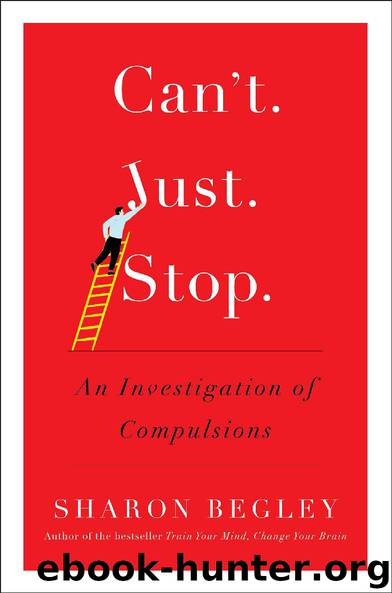Can’t Just Stop by Sharon Begley

Author:Sharon Begley
Language: eng
Format: epub
Publisher: Simon & Schuster
Madness or Eccentricity?
By the late nineteenth century, medical opinion was coalescing around the view that compulsions were not a form of insanity, as the era understood it. Instead, as English psychiatrist Henry Maudsley put it in his 1879 textbook The Pathology of Mind, they occur when a need “to do some meaningless and absurd act” takes “hold of the fancy and will not let it go,” compelling the victim “to repeat the act over and over again, since thus only can peace of mind be obtained.”
In 1894, Daniel Hack Tuke kicked off a debate on compulsions with a paper in the neurological journal Brain. “I refer to those cases in which a person would not be regarded as insane, although the mental trouble may be as distressing as it is in actual insanity.” Compulsion symptoms vary, he continued, and can include “certain ideas or words aris[ing] with painful frequency and vividness.” Such mental compulsions, he continued, can be accompanied by physical ones, as in “persons who invariably touch some object in passing it in the course of an accustomed walk ( Délire du toucher ), the antithesis of which is seen in the dread of touching certain objects at all.” Tuke also recognized “arithmomania, or the morbid desire to count without rhyme or reason, or to make interminable calculations.” He bemoaned the then-faddish tendency of “alienists” to coin terms for every compulsion, fretting that doing so could “distract our attention from the fundamental characteristics common to all,” namely, “their automatism, the overwhelming and recurring tendency to be haunted by a certain idea, to perform certain acts . . . with a consciousness of the utter uselessness and absurdity of” the compulsive thought or act.
This was an early explicit recognition that compulsions, despite taking forms as different as checking to see if you ran over someone or pedaling your exercise bike until you drop or frantically swiping your smartphone screen . . . all reflect an underlying mental state: a profound anxiety that can be relieved (albeit temporarily) only by executing the compulsive behavior. Someone besieged by a compulsion is “utterly powerless to resist it,” Tuke wrote. The cause? “Undue mental labor, intense emotional excitement”—the key ingredients of anxiety, an emotion found in perfectly sane people. A “slight degree” of the anxiety that triggers compulsions “is not uncommon in perfectly sane people,” Tuke argued. A lab worker at an asylum, he said, had recounted how, “after shutting the door the last thing at night and having no doubt that it was shut, he would return once or perhaps twice to satisfy himself that this was the case. In the same way I have known persons open an envelope in which they had placed a cheque and had exercised great care that the date and signature were correct, in order to satisfy themselves that they were so.” Even at the dawn of science’s embrace of compulsions, the experts of the day acknowledged that they can be so mild as to make calling them madness—or, today, a form of mental illness—absurd.
Download
This site does not store any files on its server. We only index and link to content provided by other sites. Please contact the content providers to delete copyright contents if any and email us, we'll remove relevant links or contents immediately.
Should I Stay or Should I Go? by Ramani Durvasula(6785)
Why We Sleep: Unlocking the Power of Sleep and Dreams by Matthew Walker(5642)
Fear by Osho(4085)
Flow by Mihaly Csikszentmihalyi(4052)
Rising Strong by Brene Brown(3781)
Why We Sleep by Matthew Walker(3773)
Too Much and Not the Mood by Durga Chew-Bose(3694)
How to Change Your Mind by Michael Pollan(3679)
The Hacking of the American Mind by Robert H. Lustig(3580)
Lost Connections by Johann Hari(3455)
He's Just Not That Into You by Greg Behrendt & Liz Tuccillo(3303)
Evolve Your Brain by Joe Dispenza(3051)
What If This Were Enough? by Heather Havrilesky(2945)
Resisting Happiness by Matthew Kelly(2887)
Crazy Is My Superpower by A.J. Mendez Brooks(2860)
The Courage to Be Disliked by Ichiro Kishimi & Fumitake Koga(2797)
The Book of Human Emotions by Tiffany Watt Smith(2771)
Descartes' Error by Antonio Damasio(2731)
In Cold Blood by Truman Capote(2685)
